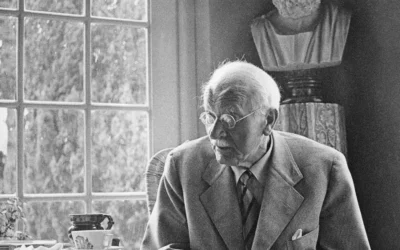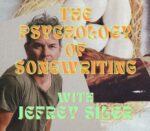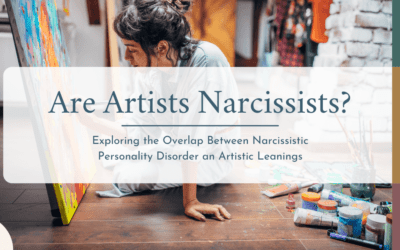What Does It Mean to Dream About Glass Objects in Your Mouth? Dreams about glass objects trapped in the mouth represent one of the most psychologically rich and recurring patterns I've encountered in clinical practice. These dreams typically involve glass balls, light bulbs, bottles, or other fragile objects that are too large to remove from the mouth, yet too dangerous to swallow without causing internal damage. What Is a Dream About a Glass Ball in the Mouth? When patients describe dreams featuring glass...
Dreams and the Unconscious: Accessing Hidden Wisdom for Healing and Growth
Exploring the Night Mind’s Therapeutic Guidance in Birmingham
Welcome to Taproot Therapy Collective’s comprehensive exploration of dreams and unconscious processes as powerful therapeutic tools for healing, self-discovery, and psychological integration. As Birmingham’s premier depth psychology practice, we recognize that dreams offer direct access to unconscious wisdom that can accelerate therapeutic progress and provide profound insights into personal challenges, relationships, and life direction.
Understanding Dreams as Therapeutic Communication
Our Dreams and the Unconscious blog category examines how the sleeping mind continues psychological work through symbolic imagery, emotional processing, and creative problem-solving that informs conscious awareness and therapeutic healing. Dreams represent the psyche’s natural self-regulating mechanism, offering compensatory perspectives, processing traumatic material, and revealing unconscious resources for growth and resilience.
This approach builds on the comprehensive therapeutic philosophy detailed on our main services page, where we integrate multiple modalities including EMDR, Brainspotting, and somatic therapies that recognize how unconscious material influences psychological symptoms and healing processes. Dream work enhances these evidence-based approaches by providing direct access to symbolic representations of psychological dynamics.
Jungian Approaches to Dream Analysis and Interpretation
Carl Jung revolutionized dream work by treating dreams as meaningful communications from the unconscious mind rather than mere wish fulfillment or random brain activity. Jungian dream analysis recognizes dreams as purposeful expressions of the psyche’s self-regulating intelligence that offer guidance, compensation, and wisdom for psychological development and healing.
The amplification method explores dream symbols through personal associations, cultural meanings, mythological parallels, and archetypal significance to understand their deeper psychological message. This technique recognizes that dream symbols often carry multiple layers of meaning requiring careful exploration rather than predetermined interpretations from dream dictionaries or universal symbol guides.
Jung’s personal journey with dreams and unconscious material, documented extensively in The Red Book, demonstrates how sustained attention to unconscious communications through dreams, active imagination, and creative expression facilitates profound psychological transformation. His sixteen-year process of documenting inner experiences shows how dreams connect with waking consciousness to support individuation and authentic self-realization.
Series dream analysis tracks recurring themes, evolving symbols, and developing patterns across multiple dreams to understand the unconscious mind’s ongoing communication about psychological development needs. This longitudinal approach reveals how dreams respond to life circumstances, therapeutic work, and personal growth processes while offering guidance for future development and healing.
Contemporary Neuroscience of Dreams and Sleep
Modern sleep research from institutions like Harvard Medical School’s Division of Sleep Medicine and Stanford Sleep Sciences Institute reveals the crucial role of REM sleep and dreaming in memory consolidation, emotional processing, and psychological integration. Neuroscience studies demonstrate how dreams facilitate trauma processing, creative problem-solving, and emotional regulation through complex brain networks.
Research shows that dreams activate the same neural circuits involved in waking emotional experiences, allowing safe processing of difficult material through symbolic representation and metaphorical expression. This neurological understanding supports therapeutic approaches that use dream content to access and integrate traumatic memories, relationship patterns, and unconscious conflicts.
Sleep disorders significantly impact mental health outcomes, with insomnia, nightmares, and sleep disruption contributing to anxiety, depression, and trauma symptoms. Understanding the bidirectional relationship between sleep quality and psychological wellness informs comprehensive treatment approaches that address both symptom management and sleep hygiene as essential components of mental health care.
Dreams in Trauma Recovery and EMDR Integration
Dreams often reveal traumatic material in symbolic form that allows gradual processing and integration without overwhelming conscious defenses. Trauma survivors frequently experience recurring nightmares, symbolic reenactments, or healing dreams that represent different stages of recovery and integration processes.
EMDR therapy, a cornerstone treatment offered at Taproot Therapy Collective, benefits significantly from dream work as dreams often provide symbolic representations of traumatic memories, resource states, and healing imagery that inform bilateral stimulation protocols. Dreams may reveal positive memories and internal resources that support trauma processing while offering metaphorical frameworks for understanding recovery and post-traumatic growth.
Nightmare treatment approaches combine evidence-based interventions with dream work techniques to help trauma survivors develop agency and mastery over disturbing dream content. Image rehearsal therapy, lucid dreaming techniques, and symbolic transformation methods provide practical tools for changing nightmare narratives while addressing underlying trauma symptoms through comprehensive therapeutic approaches.
Dreams also reveal how trauma affects unconscious processes including hypervigilance patterns, safety concerns, and survival strategies that influence waking behavior and relationship dynamics. Understanding these unconscious patterns through dream analysis enhances trauma therapy effectiveness while providing clients with greater insight into their psychological responses and healing processes.
Cultural and Spiritual Dimensions of Dream Work
Different cultural traditions offer valuable perspectives on dream interpretation and unconscious processes that enhance therapeutic understanding and cultural competency. African American dream traditions, particularly relevant in Birmingham’s cultural context, emphasize prophetic dreams, ancestral communication, and community guidance that provide spiritual and psychological resources for healing and growth.
Native American dream practices recognize dreams as spiritual communication and guidance from natural and ancestral forces, offering holistic approaches to psychological healing that honor both individual and collective wisdom. These traditions emphasize the interconnection between dream life, community wellness, and environmental harmony that informs contemporary approaches to mental health and community healing.
Religious and spiritual traditions including Christianity, Islam, Judaism, Hinduism, and Buddhism offer rich frameworks for understanding dreams as spiritual communication, divine guidance, or psychological insight that complement therapeutic approaches while honoring clients’ spiritual orientations and cultural backgrounds.
Birmingham’s diverse religious communities provide cultural contexts for dream work that honor spiritual interpretations while integrating psychological understanding and evidence-based therapeutic interventions. Understanding how different cultural groups approach dreams and unconscious processes enhances therapeutic effectiveness and cultural responsiveness.
Practical Dream Work Techniques in Therapy
Dream Journals and Recording Methods provide structured approaches for capturing dream content, emotional responses, and personal associations that support ongoing therapeutic exploration. Effective dream journaling includes immediate recording upon waking, emotional tone documentation, personal associations, and tracking patterns over time to identify recurring themes and psychological developments.
Gestalt Dream Work uses role-playing and dialogue techniques to explore different dream elements as aspects of the dreamer’s personality, allowing integration of conflicting psychological parts and deeper understanding of internal dynamics. This approach treats every dream figure, object, and setting as representing different aspects of the dreamer’s psyche requiring recognition and integration.
Active Imagination with Dream Figures extends Jungian techniques to continue dream narratives in waking consciousness, allowing deeper exploration of dream messages and completion of interrupted dream processes. This method involves entering meditative states and imaginatively engaging with dream characters to understand their psychological significance and receive guidance for personal development.
Symbol Exploration and Amplification uses artistic expression, movement, and creative exploration to deepen understanding of dream imagery and access unconscious meanings that verbal analysis alone cannot reach. Creative approaches including drawing, clay work, dance, and drama provide embodied access to dream content that enhances psychological integration and therapeutic progress.
Sleep Hygiene and Mental Health Integration
Comprehensive mental health care includes attention to sleep quality, sleep environment, and sleep hygiene practices that support both restorative rest and meaningful dream experiences. Poor sleep significantly impacts mood regulation, cognitive function, and trauma recovery while creating barriers to effective therapeutic work and psychological healing.
Sleep hygiene education includes establishing consistent sleep schedules, creating supportive sleep environments, managing caffeine and screen exposure, and developing bedtime routines that promote both sleep quality and dream recall. These practical interventions support therapeutic goals while providing clients with concrete tools for improving mental health through better sleep practices.
Meditation and relaxation techniques enhance both sleep quality and dream experiences through nervous system regulation, stress reduction, and increased present-moment awareness that carries into dream states. Mindfulness practices support dream recall while providing frameworks for working with dream content in therapeutically beneficial ways.
Understanding how medications, substances, and lifestyle factors influence dream content and sleep architecture helps therapists provide comprehensive treatment recommendations that support both symptom management and therapeutic progress through improved sleep and dream experiences.
Research-Based Insights from Leading Sleep Centers
Contemporary dream research from University of California Berkeley’s Sleep and Neuroimaging Laboratory, University of Wisconsin-Madison Sleep Research Laboratory, and Mount Sinai School of Medicine Sleep Medicine Division continues validating therapeutic applications of dream work while expanding understanding of how dreams support psychological processing and healing.
Studies demonstrate that dream content correlates with waking psychological concerns, therapeutic progress, and emotional processing needs, supporting clinical applications of dream analysis in comprehensive mental health treatment. Research on lucid dreaming, nightmare treatment, and dream-enhanced therapy provides evidence-based foundations for integrating dream work with conventional therapeutic approaches.
Neuroscience research reveals how different sleep stages contribute to memory consolidation, emotional regulation, and creative problem-solving, informing therapeutic approaches that honor sleep and dreams as essential components of psychological wellness and therapeutic progress.
Connect with Our Dreams and Unconscious Community
For deeper exploration of dream work and unconscious processes in therapeutic practice, check out more on the Discover + Heal + Grow Taproot Therapy Collective blog and podcast where we regularly feature dream specialists, sleep researchers, and practitioners integrating unconscious work with evidence-based therapeutic approaches.
Subscribe to our YouTube channel for guided dream work exercises and sleep improvement techniques, listen to our podcast for expert interviews on dreams, sleep, and unconscious processes, follow us on Instagram for daily tips on sleep hygiene and dream awareness, connect on LinkedIn for professional resources on dream work in therapy, find us on Google Maps for comprehensive therapy including dream analysis and sleep support, and join our Reddit community for discussions on dreams, unconscious processes, and psychological integration.
Featured Article Categories
Our Dreams and the Unconscious blog includes Dream Analysis Techniques for understanding symbolic communication, Trauma Dreams and Nightmares addressing disturbing dream content therapeutically, Sleep and Mental Health exploring the bidirectional relationship between rest and psychological wellness, Cultural Dream Traditions honoring diverse approaches to unconscious wisdom, Lucid Dreaming and Dream Control providing tools for active dream engagement, Recurring Dreams and Patterns tracking long-term unconscious communication, Creative Dream Work using artistic expression for psychological integration, and Research and Science covering contemporary findings on dreams, sleep, and therapeutic applications.
Specialized Dream Work Programs
We offer monthly Dream Analysis Groups for sharing and exploring dream content in supportive community settings, quarterly Nightmare Treatment Intensives using evidence-based approaches for disturbing dreams, Sleep and Mental Health Workshops addressing insomnia and sleep disorders affecting psychological wellness, and individual Dream-Enhanced Therapy integrating unconscious work with comprehensive treatment approaches.
Start Your Dream Work Journey Today
The unconscious mind offers profound wisdom and healing resources accessible through dream work and sleep attention that enhance therapeutic progress and personal growth. Our Birmingham-based team at Taproot Therapy Collective integrates dream analysis with evidence-based approaches detailed in our psychology and research section to provide comprehensive treatment that honors both scientific understanding and unconscious wisdom.
Contact Taproot Therapy Collective: 📍 2025 Shady Crest Dr. Suite 203, Hoover, AL 35216
📞 (205) 598-6471
🌐 www.GetTherapyBirmingham.com
🎧 Podcast: gettherapybirmingham.podbean.com
We provide comprehensive therapy that integrates unconscious work, dream analysis, and sleep support with evidence-based treatments for holistic healing that honors both conscious and unconscious dimensions of psychological wellness.
Discover + Heal + Grow with Taproot Therapy Collective – Birmingham’s gateway to unconscious wisdom and therapeutic dream work.
Unlocking the Wisdom of Your Dreams: A Journey with the Authors of “Dream Wise”
Unlocking the Wisdom of Your Dreams: A Journey with the Authors of "Dream Wise" Buy the book! I recently had the pleasure of interviewing Deborah Stewart, Lisa Marchiano, and Joseph Lee, the hosts of the popular This Jungian Life podcast and authors of the new book Dreamwise: Unlocking the Meaning of Your Dreams. As a therapist interested in spirituality and mysticism, I was eager to explore their approach to Jungian dream work and learn about the inspiration behind their book. Key Takeaways from the...
The Architecture of Sleep: Understanding the Neurobiology, Evolution, and Therapeutic Implications
Why do we Sleep? Sleep is a fundamental biological process that is essential for the health and well-being of all mammals, including humans. Despite its ubiquity and importance, sleep remains one of the most mysterious and poorly understood aspects of our lives. In this article, we will explore the complex architecture of sleep, including its neurobiology, evolution, and therapeutic implications. We will examine the different stages of sleep, the role of dreams in Jungian analysis, and the various ways in which...
Egyptian Mythology: Gods, Dynasties, and the Eternal Empire
Exploring Permanence in Egyptian Mythology Egyptian architecture with its bold forms and slow lines is still associated and used to envoke power and formalism through structure. Egyptian mythology, like the civilization that produced it, is steeped in notions of permanence, eternity, and cosmic order. This focus on permanence is understandable when one considers Egypt’s geographical and political context: a kingdom bound to the cyclical flooding of the Nile, subject to occasional famine or drought, and ruled by...
What Does the Garden of Eden Symbolize?
The Symbolism of Eden: Language, Consciousness and the Birth of the Ego The story of the Garden of Eden, found in the opening chapters of Genesis, is one of the most well-known and influential myths in human history. On the surface, it describes the idyllic life of the first humans, their temptation by the serpent to eat the forbidden fruit, and their subsequent exile from paradise as punishment. Yet this simple narrative is laden with profound symbolic meanings that have been pondered by theologians,...
The Sopranos: The Psychology of Power, Empire, and Capitalism
Biederman argued that the show (The Sopranos) is, at its heart, about the bathetic nature of decline. “’Decline not as a romantic, singular, aesthetically breathtaking act of destruction,’ he said, but as a humiliating, slow-motion slide down a hill into a puddle of filth. ‘You don’t flee a burning Rome with your beautiful beloved in your arms, barely escaping a murderous horde of barbarians; you sit down for 18 hours a day, enjoy fewer things than you used to, and take on the worst qualities of your parents...
Freud’s Death Drive: What was Thanatos?
Why did Freud Abandon His Death Drive Theory? In the hit TV show Mad Men, ad executive Pete Campbell makes a daring pitch to Lucky Strike cigarettes. To sell their product, he suggests, they should embrace the subconscious "death wish" that drives people to smoke. While Campbell's pitch was shocking, the concept he based it on - Sigmund Freud's "death drive," or thanatos - is one of the most intriguing and controversial ideas in the history of psychology. Freud believed that just as humans have an innate drive...
The History of Personality Psychology
The History of Personality Psychology? Personality psychology is the study of the patterns of thoughts, feelings, and behaviors that make each individual unique. Throughout history, philosophers, scientists and psychologists have grappled with questions of identity, self-concept, and individual differences that form the core of this field. In this article, we'll dive into the fascinating history of personality psychology, exploring the key theorists, tests, and typology systems that have shaped our understanding...
Carl Jung: Explorer of the Soul A Comprehensive Examination of His Life, Work, and Legacy
Read More on Jung here: Jungian Analysis Archetypes Jung’s Method Jungian Thought 1 Who was Carl Jung? 1.1. The Significance of Jung in Psychology and Beyond Carl Gustav Jung (1875-1961) stands as one of the most influential and controversial figures in the history of psychology. As a pioneer of depth psychology and the founder of analytical psychology, Jung's ideas have had a profound impact not only within the field of psychology but also across various domains of human thought and creativity, including...
50 Common Symbols of the Shadow in Dreams
Introduction to Jungian Dream Interpretation: Exploring the Shadow through Symbols Carl Jung, the renowned Swiss psychiatrist and psychoanalyst, believed that dreams serve as a bridge between the conscious and unconscious mind, offering valuable insights into an individual's psyche. In Jungian psychology, the concept of the "shadow" represents the repressed, hidden, and often undesirable aspects of the self. These aspects are pushed into the unconscious because they are inconsistent with the persona, the face we...
What is Dissociation?
Unveiling the Complexities of Dissociation: Theories, Brain Processes, Types, and Treatment Options Dissociation is a perplexing and often misunderstood mental phenomenon that has captured the attention of researchers, clinicians, and the general public alike. It is characterized by a profound sense of disconnection between one's thoughts, emotions, memories, and sense of self. Dissociation exists on a spectrum, ranging from mild and transient experiences, such as daydreaming, to severe and persistent conditions,...
Exploring the Psychology of Songwriting with Jefrey Siler
https://youtu.be/k9hmTuIo1h8 The Creative Process and Psychological Insights of Singer-Songwriter Jefrey Siler In a recent episode of our psychotherapy podcast, we had the pleasure of diving deep into the mind and music of talented singer-songwriter Jefrey Siler. Known for his introspective lyrics and honest approach, Siler shared valuable insights into his creative process and the psychological underpinnings that shape his art. The Power of Vulnerability and Authenticity A central theme that emerged from our...
The Symbolism of Color in Dreams
What is the symbolism of different colors in dreams? What does the color red mean in dreams: In dreams, colors wield the power to mirror our deepest emotions and psychic states, and red, with its primal force and psychological weight, offers a particularly vivid palette of symbolism. The color red in dreams may reflect the journey of passion and emotion that color psychology outlines in phases of stimulation. Initially, a dream awash in pallid red tones could suggest a phase of emotional dormancy, where the...
3 Ways Your Shadow Shows Up as Animals in Myths and Dreams
Carl Jung thought that dreams were the way that we use the past to try and conceptualize what the future will be like. When we are on the edge of a big often unavoidable change in our life we begin to dig into our unconscious mind to try to predict the future. Our unconscious uses our past experience and hidden beliefs to make collages of what the future might look like. In Jungian psychology our "shadow" is all the parts of yourself that we do not want to examine or accept. This can be memories, behavior, or...
Are Artists Narcissists?
I had a patient ask me one time if artists were narcissistic. The question sent me for a loop because it hit on such a basic truth about how these personality types communicate. Patients with Narcissistic Personality Disorder are deeply ashamed of some part of themselves on an unconscious level. This shame comes from trauma, abuse or neglect in childhood. The shame is so deep that all of their conscious and unconscious energies go into controlling others perception of themselves and elevating those perceptions to...
Are You in Touch With Your Inner Magician?
The Magician is intuition, education, and reflexes. In myth and legend the Magician appears in stories not to be the hero, but to aid the hero on their quest. In these stories the Magician can also take the form of a witch, enchanter, or shaman. The Magician is the most esoteric part of our schooling that filled us with the most passion. The Magician is a sense of personal power and accomplishment, but not power gained through conflict like the Warrior. Power for the Magician comes through cleverness, tricks and...

















